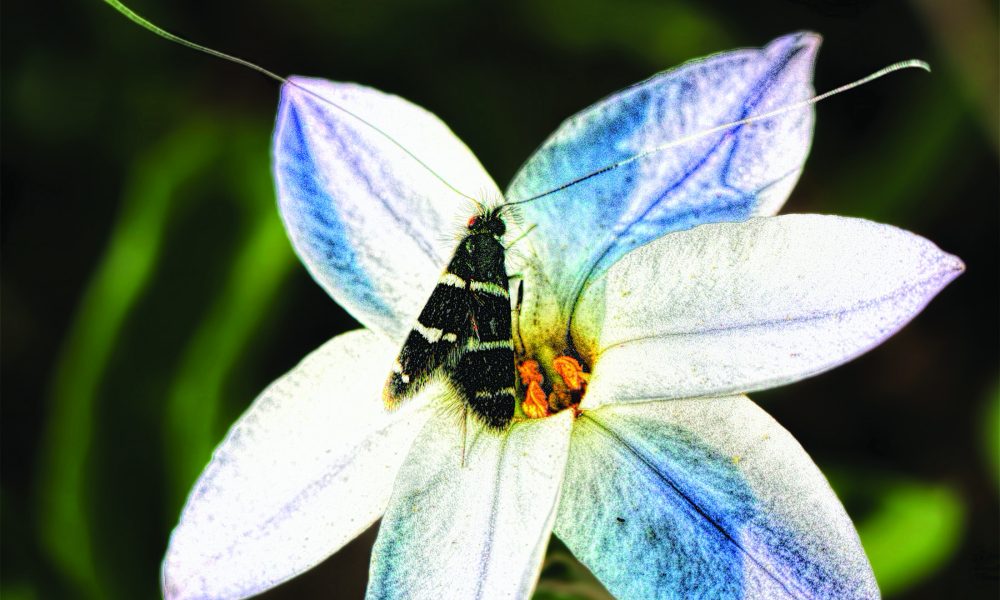
“When the first baby laughed for the first time, its laugh broke into a thousand pieces, and they all went skipping about, and that was the beginning of fairies” ~James M. Barrie
Did you know those laughter-born fairies still live in the Upper Rogue? Meet the fairy moth (Adela trigrapha). No you aren’t seeing things; the antennae really are that long!
Fairy moths are less than one-quarter of an inch in size, but those antennae are 2 1/2 times longer than their bodies!
Pictured is a male; the female’s antennae are ‘only’ two times their body length. Both males and females have very large eyes relative to their body size. When you’re that teeny, it’s good to have excellent vision to avoid potential predators.
Interestingly, their scientific genus name “Adelidae” has nothing to do with fairies or with their extra long antennae. It comes from the Greek “Adela” meaning “hidden,” because their caterpillars are so well hidden. With the adults being under one-quarter of an inch, you can imagine how extra small the caterpillars are.
The caterpillars are also excellent at camouflaging themselves. Some species construct flat, portable cases of silk covered by debris and feed on fallen or lower leaves of host plants – extra sneaky.
There are 295 species of fairy moths worldwide, only 18 of which can be found in North America, with at least three of those present in Oregon.
In addition to those exceptionally long antennae, fairy moths are also known for their sparkly, metallic wing scales. Our pictured moth’s wings refracted purple from a different angle than photographed. Well, the diurnal ones at least. There are some nocturnal species of fairy moth, and those have more muted coloring.
Often groups of males can be seen swarming around the tips of branches in a fairy-like up and down flight to attract the ladies. That would be quite a spectacle.
Little is known about the lives of fairy moths (which makes sense, fairies have always been secretive). No one is even sure why those amazing antennae are so long!
We do know that the pictured species flies from April to July. Females lay eggs in the base of unopened flowers in the phlox family (Linanthus). When the eggs hatch the caterpillars munch on the blossoms, then overwinter underground in pupal cases.
If you’d like to attract fairies to your yard, you can plant some of their preferred native flora. Options include various species of Lhinanthus such as prickly phlox, sandblossoms and eveningsnow. Even the names of their host flowers sound like they’re straight out of a fairy tale!
Adult fairy moths will feed on the nectar of various woody, flowering plants. Not only are they lovely to look at, but they are excellent pollinators too.
Wonder if we should add “Here there be Fairies” to our Upper Rogue maps?

